
Developer: Tindalos Interactive
Publisher: Focus Home Interactive
Platform: PC
Tested on: PC
Battlefleet Gothic: Armada II – Review
The first part of Battlefleet Gothic: Armada came out in 2016, and was as well an extension of the ever-expanding Warhammer 40,000 series as it was a translation of the real-life Warhammer board game called Battlefleet Gothic. Almost three years later, there’s a second part, exclusively available for the PC master race (like the first part), and it asks you if you are ready to battle it out in space.
Story
Battlefleet Gothic: Armada II starts off in the middle of a few fights with high stakes as you drop into the tutorial action. An instant point of notice for those who plan to play this: you have to finish the tutorial before you can start with the actual campaign, and there is no save-point available while doing so. Following a few leaders of (giant) spaceships and entire fleets, for some reason, all the leaders prefer to be suicidal in a hopeless amount of combat instead of actually using some tactics to retreat and regroup as a normal, rational person would do. The game tries to put it down as human and heroic, but it really comes across as if the characters didn’t pass elementary school and don’t care if they sacrifice tens of thousands of lives.
During these suicidal acts, you get a LOT of information and story delivered to you, which, when you are unfamiliar with the Battlefleet Gothic lore, can be quite overwhelming. To sum it up very simple: A creature called Abaddon the despoiler is waging war against the Imperium of Man, and you will play three different campaigns with the Imperium, the Necrons, and the Tyranids, all to fight the evil forces that try to banish you from the galaxy. The deliverance alters between in-game voiced conversations and information, and some neat cutscenes using digital artwork that fills in the gaps of some background story and lays down a need-to-know basis for your next mission.
Graphics
Battlefleet Gothic has some of the most distinctive marks in, not only general games of its space genre, but also the Warhammer 40,000 series itself. The combination of giant spaceships and gothic church architecture is something you won’t see in any other well-known series or style. It’s impressive to see the giant ships that look somewhat like lengthy rocks floating in space with an entire city built upon them. A city of not only buildings but also heavy weaponry, that is. Most of the visuals, when you are not looking at a cutscene, will probably consist of two sides barraging each other with torpedoes, energy weaponry and ships. It’s somewhat of a firework spectacle to see all these things being fired upon all directions. That being said, it also makes the game rather heavy. This review was done after playing the game with a GTX 1060 6GB graphics card, and with the graphics set on medium, the game still quickly tends to lose a lot of frames. Since the pace of the gameplay can already be a bit slow, this just adds up to that frustration and it’s a valid argument to take in if you are considering to play or buy Armada II.
Sound
The sound is really of top quality. At the very least you can be impressed by the heavy voice acting that might as well come from a movie, with realistic (if not a bit dumb and suicidal) characters that have their own unique sound to them. It’s really a rather convincing performance. Add to that, that the background music is cinematic as well, swelling up whenever you are either watching or playing, it might just be the best section of the game. Too bad that such enthusiasm isn’t entirely found or fitting with the gameplay.
Gameplay
Battlefleet Gothic: Armada II is defined as a 4X strategy game. The latter isn’t weird, cause it is partially traditional tabletop strategy such as a game of Risk would be, and it also has some similarities to games such as the Total War series. The premise is to protect, divide, conquer and expand to gain control of the space and planets around you. You do this by some type of strategic map where you can send your ships to different colonies and planets that help you build up your empire. Neutral planets are easy to claim, occupied ones by the enemy require battle to be victorious. It’s a challenge to maintain your balance in resources that you get from (upgraded) planetary colonies and other buildings (which each have their own lore) and to still build up a proper defensive and attack force that allows you to be able to gain full control.
When you do have to battle, the power of your fleet is measured by the points that each ship has. A heavy attack carrier as an example will have, say, 140 points. Most little ships that can escort your bigger fleet are more around 40. Each fleet has a point total allowing only a certain number of ships to join it, but at the start of the game, you can also have around 4 different fleets. Still following? A few fleets under your control, each with numerous ships, capped by their point total. Good. When you start your battle and your point total is high enough you can also click auto-battle, and you will probably emerge victoriously. Want to be more strategical and try to minimize the damage done to your ships or simply want to enjoy all the action? Go fight yourself and you will get a map with either capture-the-hill type of objectives or you will have to eradicate all enemies.
Each ship that you have has its own capabilities. Where one is a bit stronger in trying to board the enemy ship to eradicate all lifeforms on it, the other might be stronger in movement or torpedoes. Then you still have directional weapons, meaning most ships won’t be able to fire from their backside but need to be turned and placed in a position to actually fire at what you want them to fire at. Seeing as the enemy ships won’t stay still most of the time, this can be quite a hectic challenge to manage at times. You can choose the speed of the battle at any time though, so it shouldn’t be too frustrating. It also becomes better over time, as upgrades, such as more ships become available.
What is frustrating, however, is the standard speed that ships turn around with. You can use some strategic bursts to turn around or go forward faster, the same as when you would click any other skill to say, fire torpedoes. It’s just that it has a reasonable cooldown and the enemy AI will mostly just run around you in circles, making it quite annoying to catch them sometimes. It makes the game feel more like a cat-and-mouse chase instead of an interstellar battle sometimes. Compared to some other, more classic RTS games, you definitely need some patience for this one. The coolest parts of the gameplay might maybe be the hopeless-looking parts where huge fleets take it up against each other, and all your skill is asked instead of just running around a single spaceship that’s nagging you like a mosquito. The game seems quite extensive in its options, such as allowing you to even target certain areas of specific ships to give them less speed or offensive capabilities, but because of the speed of your own ships, the sides that you can’t shoot from, and the enemy AI combined, this doesn’t seem to matter as much as it could. The game simply lacks a certain feeling of control over such an awesome looking fleet and has an engagement with the enemy that’s, sadly, rather rough.
Conclusion
At the very least, Battlefleet Gothic: Armada II delivers some cool fan service thanks to the proper sound, voice-overs, and graphics. The gameplay offers you something if you are into 4X strategy games, but the battles and the meager usability of the options laid out on the table hold the game back to be better than a visual spectacle with somewhat mediocre gameplay. It just feels like you don’t have that much control over your battles, especially earlier in the game. While allowing you to feel like a space captain might just be what the game needed to be a great addition.
Battlefleet Gothic: Armada II - Review,
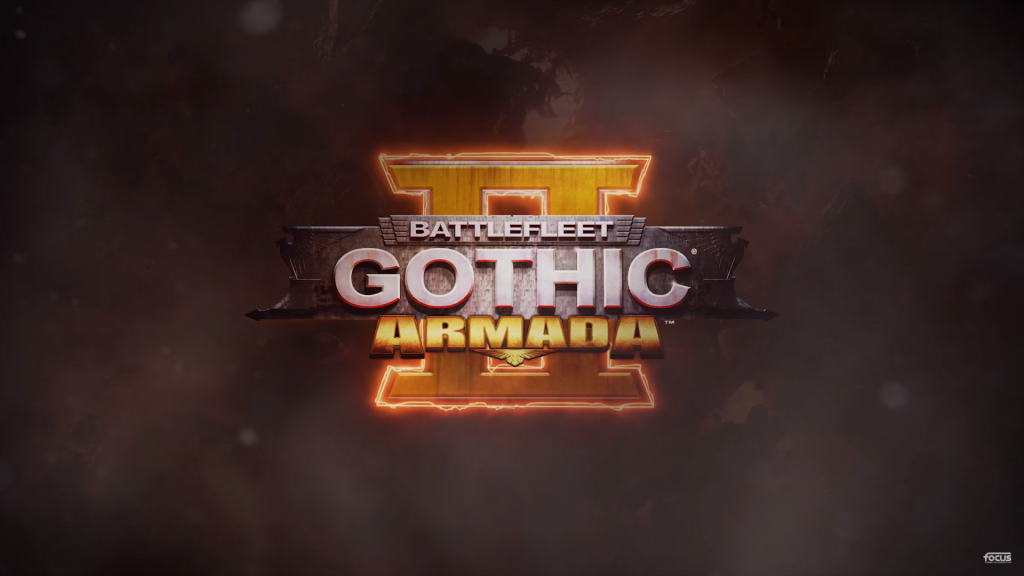

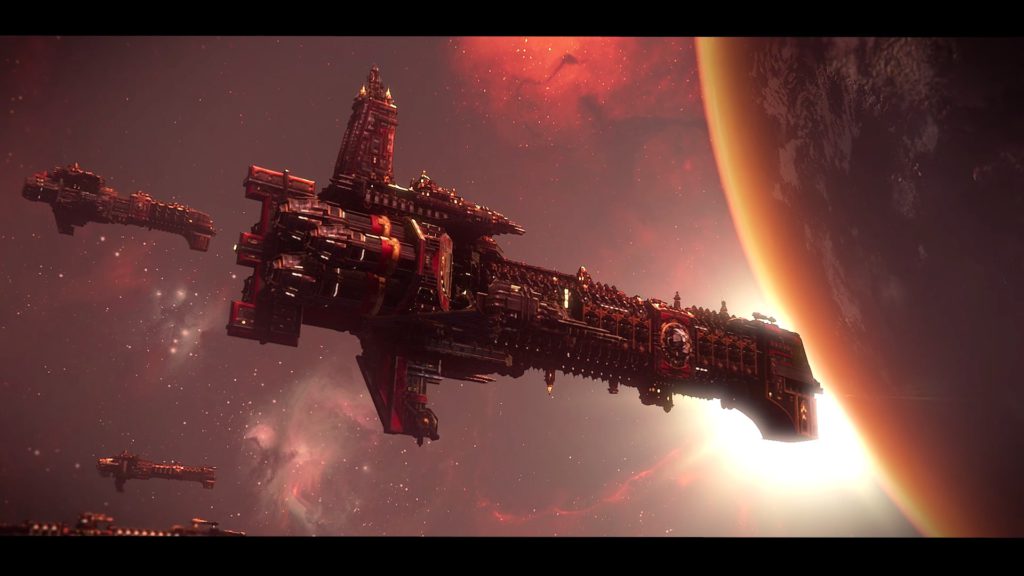
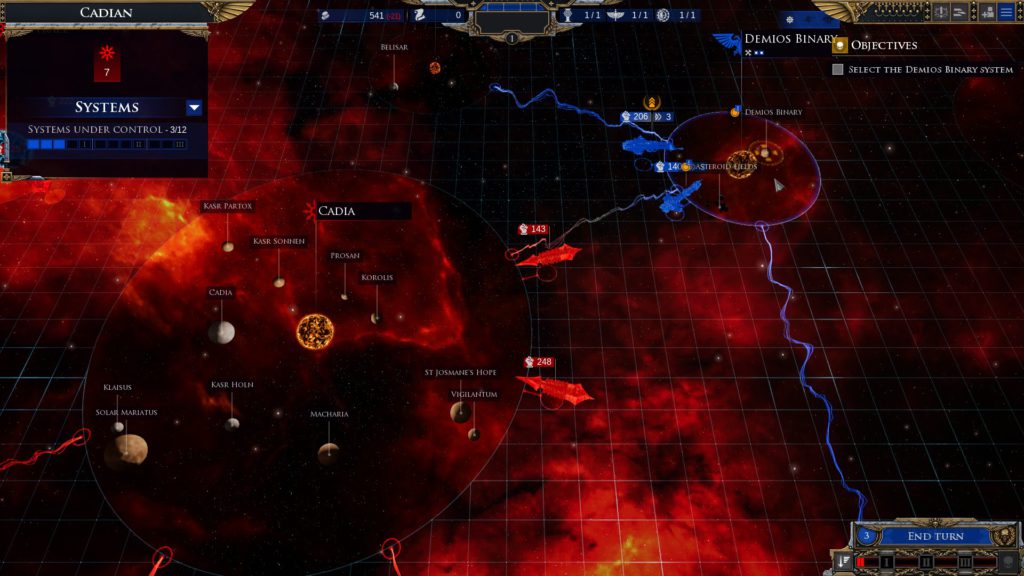
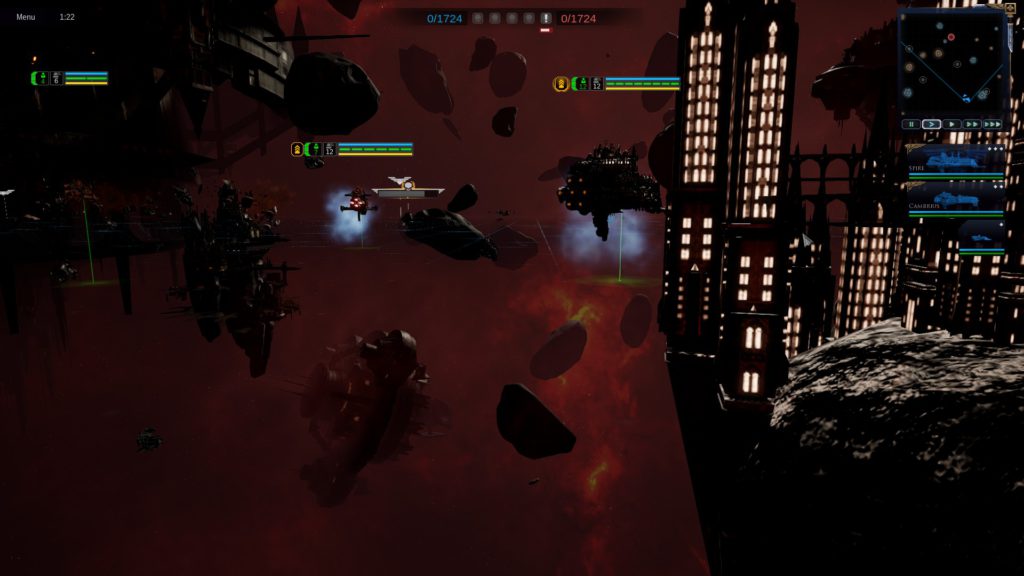
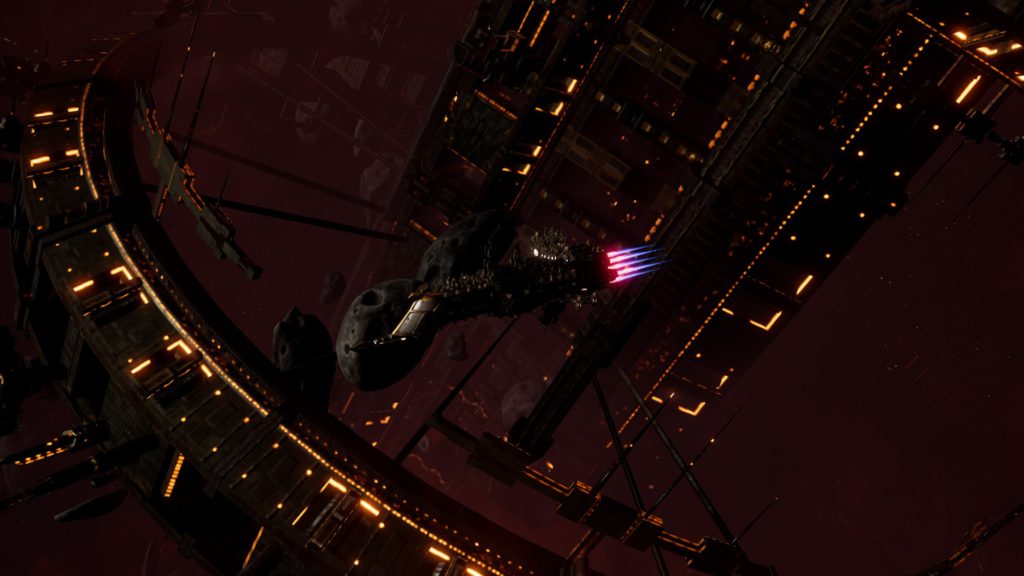



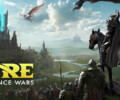
No Comments